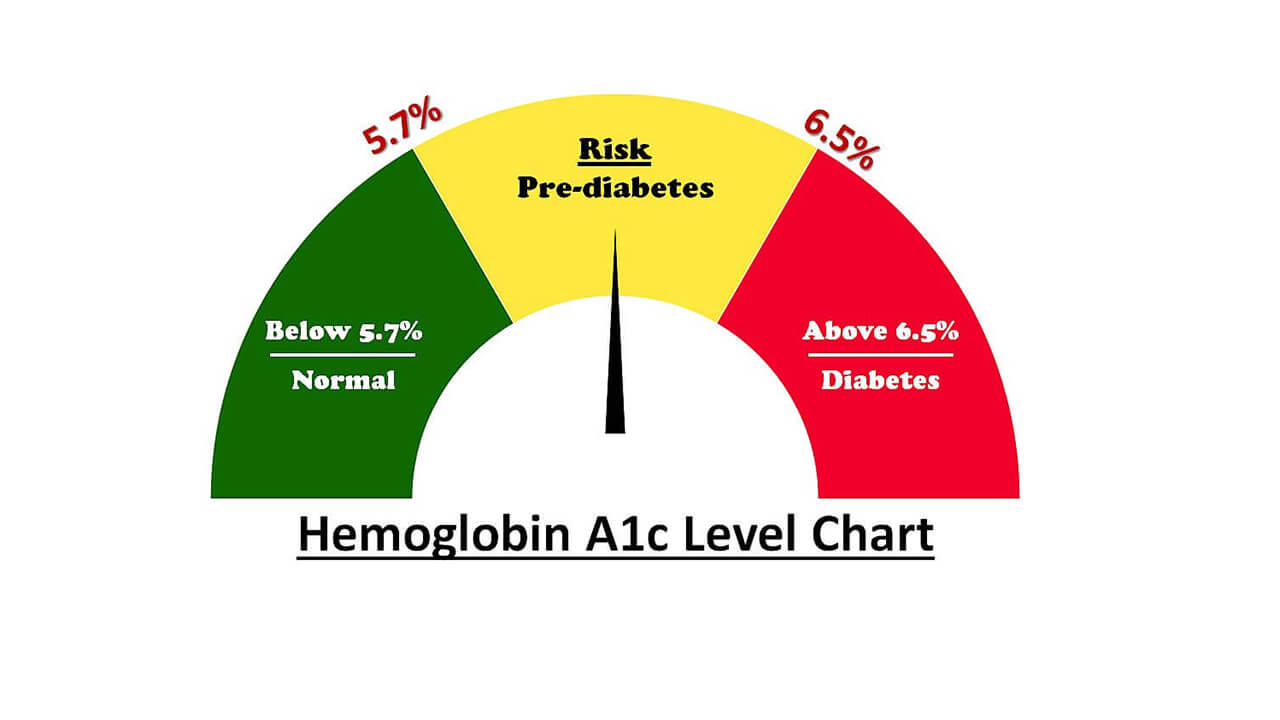
x
Hemoglobin A1C levels are a critical measure of long-term blood glucose control, especially for individuals with diabetes. This important biomarker provides insights into how well someone's blood sugar levels have been managed over several months. This article delves into the nuances of A1C levels, offering insights tailored to different age groups, with a special focus on seniors.

Hemoglobin A1C (HbA1c) is a blood test that measures the average level of blood sugar (glucose) over the past two to three months. It accomplishes this by assessing the proportion of hemoglobin proteins in red blood cells that have glucose attached to them. This test is an essential part of diabetes management because it provides a long-term perspective on blood sugar levels, unlike daily or weekly glucose tests which only offer short-term snapshots. The HbA1c test provides a picture of how well your diabetes treatment plan is working and helps in adjusting medications or lifestyle changes. The higher the percentage, the higher your blood sugar levels have been generally, indicating less effective blood sugar management. Regular monitoring can foresee potential complications and offer early warning signs for necessary interventions.
Monitoring A1C levels is crucial for managing diabetes effectively. Consistently high levels can lead to a host of serious complications such as heart disease, kidney damage, and nerve problems. Cardiovascular complications are particularly concerning, as individuals with diabetes have a significantly increased risk of heart attacks and strokes. By keeping track of your A1C levels, you can work with your healthcare provider to make necessary adjustments in your treatment plan. This proactive management approach is vital to preventing or delaying the onset of diabetes-related complications, thereby improving overall quality of life.
Moreover, achieving targeted A1C levels is often associated with a sense of empowerment and better mental health among diabetics. Knowing that you have a clear understanding and control over the disease can alleviate the stress and anxiety often associated with chronic illness management. It is also important to note that goals for A1C control can vary significantly among different populations, particularly among seniors, due to differences in overall health status and life expectancy considerations.
For seniors, maintaining an appropriate A1C level is essential but can differ from younger adults due to various health considerations such as increased likelihood of frailty, coexisting medical conditions, and changes in medication metabolism. Generally, an A1C level below 7% is recommended for most adults with diabetes. However, for seniors over 65, especially those with other health issues or limited life expectancy, a slightly higher target may be more appropriate. This tailored approach ensures that treatment burden and hypoglycemia risk do not outweigh the benefits of tight glycemic control.
Healthcare providers often adopt a more holistic approach when considering A1C targets for older adults. They may incorporate quality of life factors, independence, and preferences into treatment plans. Thus, the conventional target may be adjusted to prioritize an individual's overall well-being.
Age plays a significant role in determining what constitutes a "normal" or "acceptable" A1C level. Here's a breakdown:
If you're over 65, your target A1C should reflect your overall health status. When customizing A1C goals for seniors, one must consider factors like cognitive function, physical capabilities, and the risk of severe hypoglycemia. Specifically:
These guidelines reflect a growing recognition of the risk from hypoglycemia (low blood sugar) which can be particularly dangerous in older adults, as it can lead to falls, cognitive impairment, and cardiovascular events.
The American Diabetes Association (ADA) provides specific guidelines based on age and overall health. These guidelines serve as a foundational reference for healthcare providers to design individualized care plans:
| Age Group | Recommended A1c (%) |
|---|---|
| Children | <7.5 |
| Adults | <7 |
| Healthy Seniors | <7 |
| Seniors with Health Issues | 7 - 8 |
Source: American Diabetes Association
These adaptable guidelines encourage discussions between patients and providers about what A1C targets are both realistic and beneficial given the entirety of a patient’s health and lifestyle profile.
Several factors influence what your target A1c should be. Understanding these variables is crucial for achieving optimal diabetes management:
Achieving desired A1c levels involves several strategies that incorporate aspects of daily life and long-term health planning:
Engage in at least 150 minutes per week of moderate-intensity exercise such as walking or cycling. This activity level can help maintain insulin sensitivity and support cardiovascular health, both of which are crucial for achieving and maintaining optimal A1C levels.
Ensure medications are taken as prescribed. Staying on a regular medication schedule is imperative for maintaining consistent therapeutic levels, which help avoid the peaks and troughs of glucose levels that drastically affect A1C outcomes. Discuss any side effects with your healthcare provider promptly to ensure that treatments are as effective and tolerable as possible.
Regularly check blood glucose levels at home. By understanding patterns and readings, you can make informed decisions about diet, activity, and potential medication adjustments. This proactive management can help keep A1C levels within desired targets.
A: Yes, chronic stress can lead to elevated blood sugar levels due to increased production of cortisol, which affects insulin sensitivity. Therefore, managing stress through techniques such as mindfulness, meditation, or counseling can play an important role in diabetes management.
A: Typically every three months if you're adjusting treatment plans or experiencing fluctuations in your control. If your diabetes is stable with good control, you may be checked every six months. These intervals offer enough data to track long-term trends effectively.
A: Yes! Losing even a small amount of weight can improve insulin sensitivity, potentially leading to lower HbA1c levels over time. Weight loss can also reduce the risk of other comorbid conditions, further benefiting overall health.
A : Some studies suggest certain supplements, like cinnamon or berberine, may help—but always consult with a doctor before starting any new supplement regimen. These interventions may complement traditional approaches but should not replace proven management strategies.
For further reading on this topic: